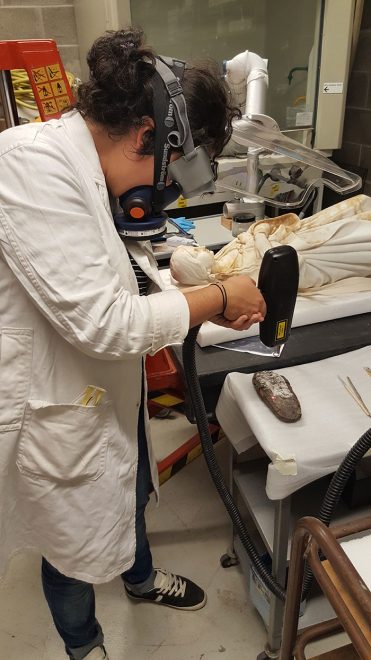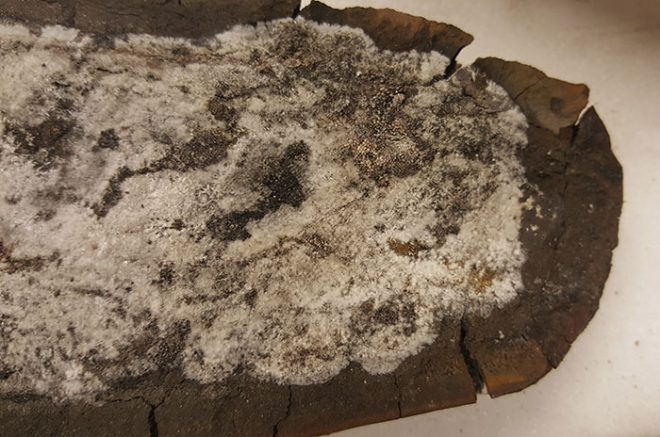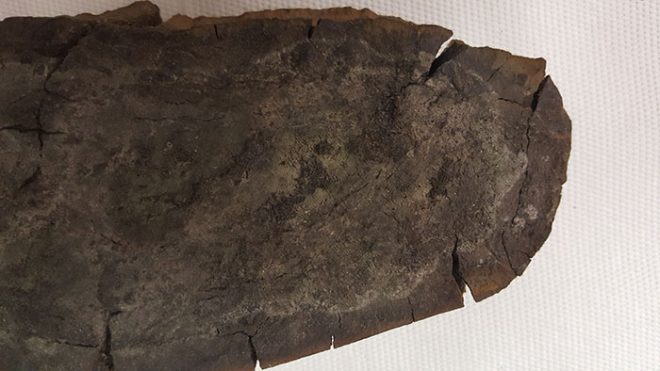I am a Conservator with a wide range of experience in the conservation of metals, archaeology and natural sciences material. I was a volunteer at National Museums Scotland in 2015 and due to the success of this placement I decided to spend some more time working with the Natural Sciences department this year thanks to a grant from the Polytechnic University of Valencia.
During the time that I spent at National Museums Scotland, supervised by Vicen Carrió, I worked mainly with the palaeobiology collection looking in particular at the conservation of acetate peels, pyrite decay cleaning and salt efflorescence cleaning on material collected by Stan Wood from Broxburn shale.
Conserving acetate peels
The acetate peel technique is an alternative to the thin section technique, which is more time-consuming and expensive. Acetate peels are used for limestone and need a flat ground surface, hydrochloric acid (5%) and acetate sheet to obtain a print of the fossil surface.
There is an important collection of acetate peels at National Museums Scotland composed of a huge amount of samples made from palaeobotany specimens. The main conservation problem is that they have been packed in paper envelopes, which have become damaged. The envelopes have been in contact with the samples so this accelerated the acidification processes of the acetates. Peels were also packed in groups of several samples which could accelerate acidification even further.
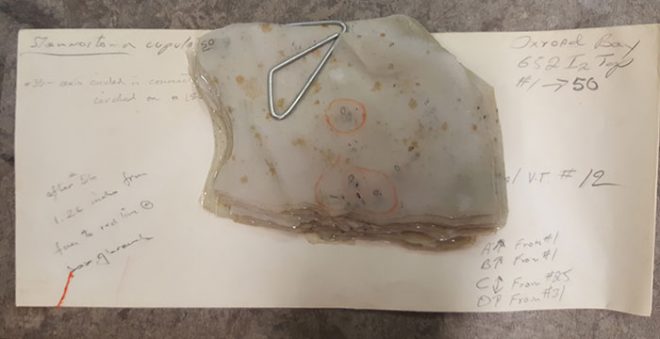
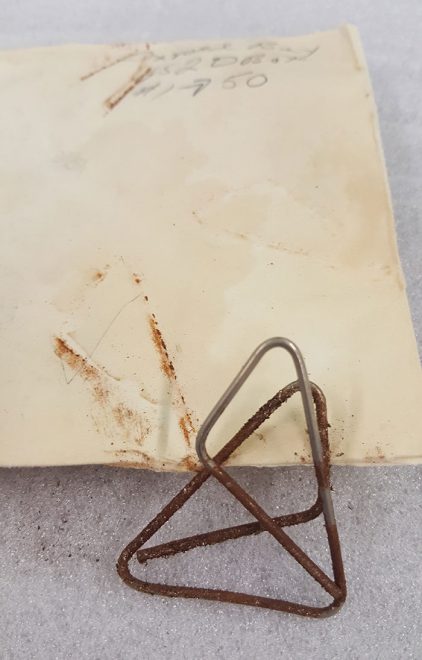
Once the conservation state of the collection was evaluated an intervention process was decided. It is particularly important to keep the acetate peels with the related samples in their original location.
Due to the large number of samples it was decided to repack the collection, conserving and keeping the information that was written on the original envelopes. This material was packed in polyethylene bags to isolate them from the acetate peels. Every piece of information was then packed together with the original group of peels that they belonged to. Each group of peels was packed also in polyethylene bags, leaving them opened to avoid gas concentration inside, and every peel was separated with a piece of acid free paper. The acetate peels must now be kept isolated from ultraviolet radiation and they need a stable environment, keeping them under controlled relative humidity and temperature.
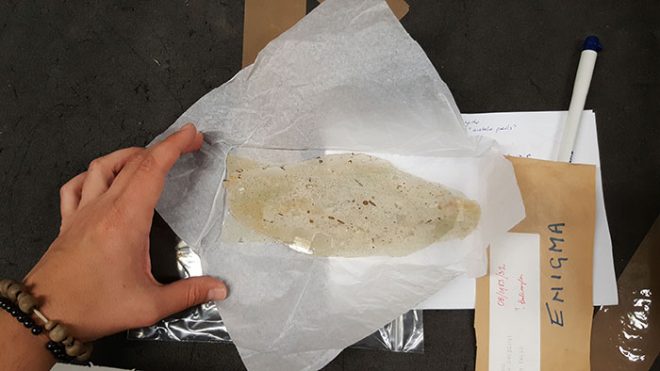
Pyrite decay
Pyrite decay is one of the most dangerous pathologies in natural sciences collections. Due to the composition of pyrite, some specimens react to high relative humidity, and there were specimens with this problem in the collections which needed urgent treatment.
Some specimens have been cleaned with a brush and mechanical tools. Some needed an extra treatment due to being mounted in wooden boxes filled with plaster of Paris (an historic method of preserving and display fossils). They needed mechanical cleaning to remove the plaster that surrounded the fossil.
Salt efflorescence
National Museums Scotland has a collection of around 500 fossil fishes from the Carboniferous rocks of the Midland Valley of Scotland, which were collected and prepared by the late Stan Wood in Broxburn, near Edinburgh.
Some specimens have appeared with salt efflorescence, so research has been carried out to find out the best treatment to stop this decay. Some analyses have been performed to determine the type of efflorescence (Stereoscopic microscopy, X Ray diffraction, Scanning Electron Microscopy with Energy Dispersive X-Ray Analysis, X-Ray Fluorescence).
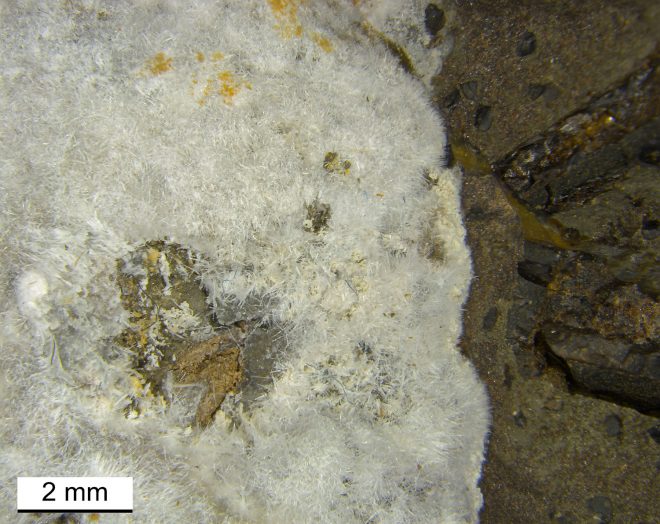
Following this analysis, conservation treatment tests were done to decide the best process to clean and consolidate the specimens. Some were treated with laser cleaning and others cleaned using mechanical tools.
